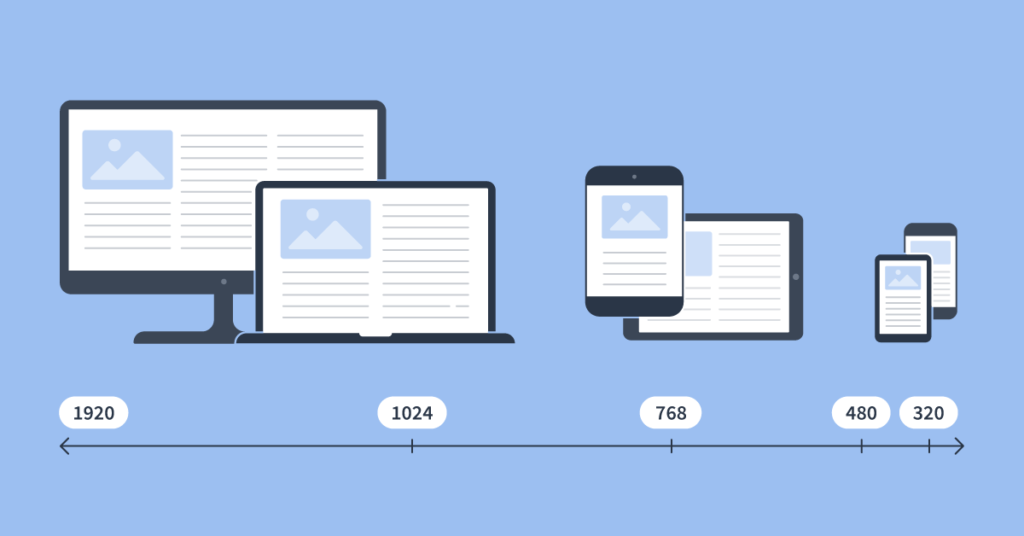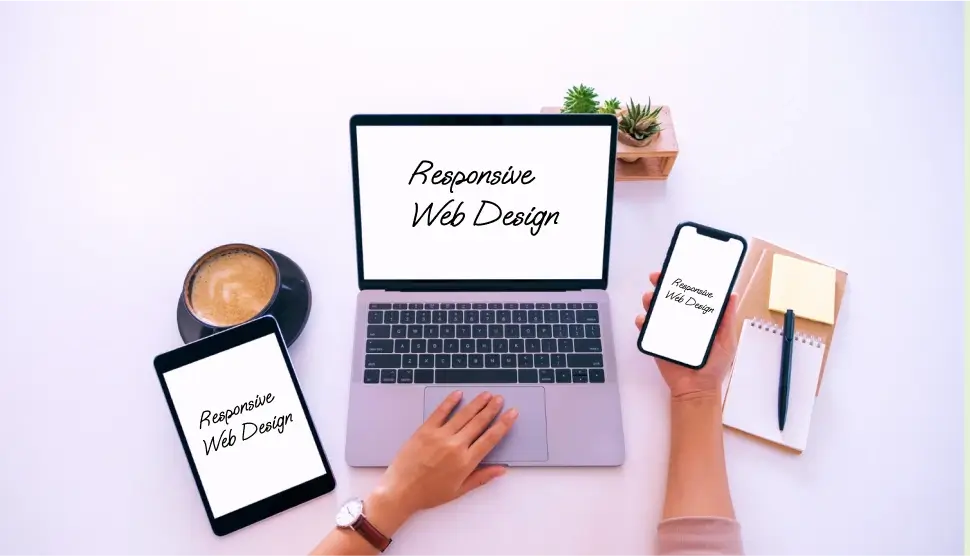In the age of the omnipresent smartphone, the internet has shed its desktop-bound skin. Today, it flows fluidly across screens of all sizes, from laptop giants to pocket-sized powerhouses. And at the heart of this seamless digital metamorphosis lies a powerful force: responsive design.
More than just a technical buzzword, responsive design is a philosophy, a commitment to crafting online experiences that adapt and thrive on any device. It’s the invisible puppeteer behind the curtain, ensuring every tap, scroll, and click feels effortless, no matter the window it’s performed on. But the impact of responsive design extends far beyond mere convenience. It shapes the very way we interact with the digital world, influencing our perceptions, decisions, and ultimately, our entire user experience.
First Impressions Matter, and Responsive Design Delivers:
Imagine landing on a website on your phone, only to be greeted by a pixelated mess, text crammed into microscopic boxes, and buttons begging to be missed. It’s an instant turn-off, a digital dead end. This is the dreaded user experience of non-responsive design, a relic of a bygone era.
Responsive design, however, paints a radically different picture. Landing pages render beautifully, content adjusts intelligently, and navigation becomes intuitive, regardless of the screen size. This first impression isn’t just visually pleasing; it speaks volumes about a brand’s professionalism, attention to detail, and, critically, its understanding of modern users. In a competitive online landscape, responsive design isn’t just a nice-to-have; it’s a key differentiator, shaping first impressions that can make or break conversions.

Beyond Aesthetics: The Deeper Impact of Responsive Design:
The benefits of responsive design extend far beyond the surface level. Let’s delve deeper into its subtle, yet crucial, impact on user experience:
1. Accessibility for All: Responsive design champions inclusivity. By removing the hurdle of incompatible formats, it opens doors for users with disabilities who navigate the web on specialized devices. It ensures everyone, regardless of their physical limitations or chosen technology, can access and enjoy the same seamless digital experience.
2. SEO Success: Google and other search engines consider website responsiveness a crucial ranking factor. A site that flawlessly adjusts to any screen size is inherently more user-friendly and engaging, and search engines recognize that. This translates to better search visibility, leading to increased organic traffic and, ultimately, more business opportunities.
3. Building Brand Trust: In today’s digital age, consistency is king. A brand that delivers a smooth user experience across all devices fosters trust and loyalty. Responsive design ensures that the brand message and identity remain unwavering, regardless of the platform, creating a sense of familiarity and comfort for users.
4. Engagement and Conversions: A clunky, unresponsive website is an engagement killer. Users will abandon ship faster than a sinking galleon. Responsive design, however, removes friction from the user journey. Navigation becomes intuitive, content remains legible, and calls to action are prominent and accessible. This translates to increased engagement, improved conversion rates, and ultimately, happier customers.
The Future of Responsive Design: Beyond Responsive, Always Evolving:
The world of responsive design is constantly evolving. As new technologies emerge and user habits shift, the definition of “responsive” needs to adapt and expand. Today, it’s not just about adapting to different screen sizes; it’s about anticipating user needs and preferences, delivering personalized experiences, and creating dynamic interactions that seamlessly flow across devices.
This future holds exciting possibilities. Imagine websites that adjust layouts based on time of day, location, or even a user’s emotional state. Responsive design will become a living, breathing entity, seamlessly weaving together content, context, and technology to create a truly personalized and immersive user experience.
Responsive design is no longer a technical afterthought; it’s the cornerstone of user experience in the digital age. It’s the unseen force shaping how we interact with information, navigate online spaces, and connect with brands. By embracing its power and leveraging its potential, we can create a web that is not just accessible and convenient, but truly delightful and enriching for all.





Leave a Reply